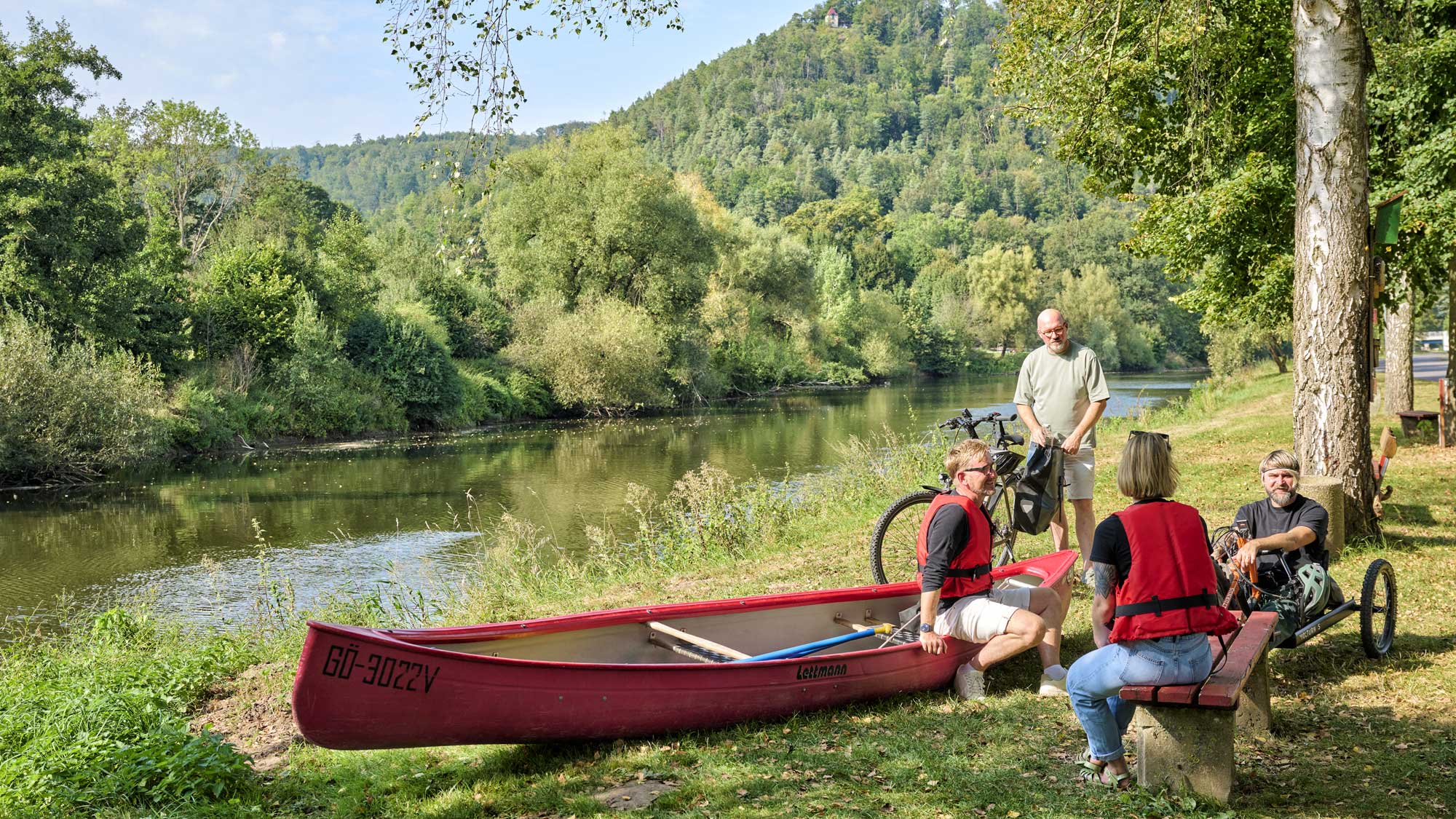You're in the right place! Whether in nature, in the middle of the city, for families, in the countryside, historic or traditional: among Thuringia's TOP hosts, everyone will find exactly the right address.
Goethe, Up Close and Personal
Goethe’s Residence and National Museum
Johann Wolfgang von Goethe is ubiquitous in Weimar, where he spent 54 years in the sphere of influence of (Grand) Duke Carl August: his literary estate in the Goethe and Schiller Archive, his garden house in the park on the Ilm River, his final resting place in the Fürstengruft burial chapel. Goethe’s home on Frauenplan street, probably the most beautiful spot in the city, was rebuilt in a classicist style according to his own ideas and has remained a top place of pilgrimage.
The door to the residence is no longer open to the public, as it once was for Goethe’s numerous guests, but there is one opening into the museum foyer next door. And in the summer, there are gates to both sides. They provide free glimpses of the courtyard: the washhouse here, the carriage there, which the Geheime Rat, or Secret Council, often used for trips into the surrounding area.
A visit to the National Museum next door offers even more insight, especially on a guided tour. For example, with Bettina Werche, curator of Goethe’s art collections at the Goethe National Museum. Two and a half hours fly by, and the PhD in Art History could easily spend days sharing anecdotes. “Did you know,” asks Werche, “that his geoscientific collection comprises approximately 18,000 rocks, minerals and fossils, making it one of the most extensive private collections from around 1800 that is still preserved today?”
Goethe's Flood of Life
The first stop of the permanent exhibition “Flood of Life – Storm of Deeds”, which has been running since 2012, starts off with more basic facts, a crash course for the not-so-savvy. Here, Goethe’s personal milestones are illustrated with various objects, including a mitten as an allusion to his greatest literary plant, or a suitcase filled with stones. Next to it, a travel coat worn by the prince of poet is on display, and opposite hangs an XL map of Europe that visualises his approximately 40,000 kilometres of travel. Of course, these also include the exciting ones to Italy. Goethe was convinced that “a clever person finds the best education while travelling”.
The exhibition is divided into seven thematic worlds, where visitors will find a wealth of written documents and garments, equipment such as an 18th-century “spherical electric machine”, as well as bills for hot chocolates and records related to his famous theory of colours. In short: there is an endless amount to see, read and marvel at.
A Supersized Faust Search Engine
In the middle of it all is the Faust Gallery, which without any windows or exhibits is all about interaction – and words. If one of 13,000 nouns is selected on the screen, it immediately appears on a cube hanging from the ceiling, framed in the corresponding “Faust” passage. Let’s try a live experiment! How about the term “God”? Click and – poof – a banner lights up: “An eternal wave, Turning, returning, A life ever burning; At Time’s whirring loom I work and play. God's living garment I weave and display.” The subject is amazed, Werche comments: “The Faust installation is all about the power of language. There’s a different atmosphere than when you go from showcase to showcase.”
Over in the residential building, the atmosphere becomes different again, almost intimate. Visitors ascend the staircase in awe. Knowing full well that HE also dwelt in this very place. And most of these rooms look almost exactly as they did on 22 March 1832, when the poet died here.
Salve, Sammler!
While the living and working spaces to the rear seem rather reverent, labyrinthine and connected by narrow staircases and doors, the front of the building is characterised by classic elegance, for example in the Yellow Hall. There, on the parquet floor in front of the doorstep, the inscription “Salve!” – which means “Greetings!” – is legendary. This is where receptions, meetings and discussions took place. There is definitely a great deal to discover in all 18 rooms, such as original furniture and memorabilia from his travels. These include small sculptures, various plaster casts, reliefs and medals as well as dozens of majolica with mythological and Christian motifs. Goethe even had glass showcases built especially for these Italian Renaissance ceramics, which still remain in their place today. Two rooms further, the plaster cast of a colossal bust, according to Goethe his “first love affair in Rome,” serve as the divine namesake of the Juno Room. The furnishings of the largest and most lavishly decorated room in the front house also include a fortepiano.
“Collectors are happy people,” Goethe is said to have quipped. The man, who, as a result, must have been brimming with happiness, also stated: “A person's home is half their life.” The fact that so much of Goethe’s home and life has been preserved is, incidentally, thanks to his childless grandson, who bequeathed the tremendously vast household to the public as an estate. This also includes the fully equipped study. It’s just a pity that nowadays a gate prevents people from entering the room.
Digital Goethe
From 2023, the so-called Goethe Apparatus on the ground floor, a digitisation project of Klassik Stiftung Weimar, will provide new and (apart from two barriers) barrier-free access to the genius. Specifically, the Apparatus gives visitors virtual hands to turn, flip and examine the objects, notes and everything around the desk and in the cabinets.
This much is certain: This interactive experience, which combines research and entertainment, is unique in the German museum landscape. Here, too, Goethe is once again the number one.
Goethe in 30 Minutes
Click here for the 360° tour of Goethe's residence.
Header Picture: ©Gregor Lengler, Thüringer Tourismus GmbH
Accessibility
Did you like this story?
Visitors' information
Angebote
Booking
You might also be interested in ...
















